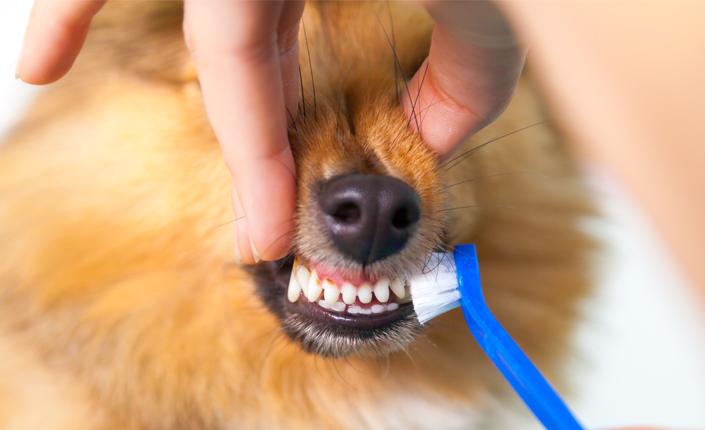
Tips for Healthy Pet Teeth
If you ever thought that the kiss from your dog was originating from a mouth that was pristine clean, nothing could be further from the truth. In fact, our pet’s mouths are full of bacteria…Gross! As our pets can’t brush their own teeth, tartar can accumulate quite quickly. Other than the bad breath and risk of mouth inflammation and infection, the problem of significant dental disease is potentially far worse than merely affecting their mouth. Bacteria from the mouth are picked up by the bloodstream spread all over the rest of the body setting up residence in the heart, liver, kidneys and other key organs. The result is the development of heart disease and other organ dysfunctions.
Without proper care, the mouth literally becomes a breeding ground for a variety of flora and fauna that puts the entire body at risk. So, knowing this, what can we do to help our pets maintain a healthy mouth?
- Start Young: When you first bring home your new puppy or kitten, spend a few short minutes a day, multiple times, looking in their ears, eyes, handling their feet and specifically opening mouths gently. Move your index finger inside much like a toothbrush, covering the gums and moving around the teeth. It’s important to not be too obtrusive or forceful but doing these things daily or a few times a week will get them used to being handled, especially around the mouth. Tip: Dab a little pet toothpaste or pet safe (xylitol free) peanut butter on your finger to make it a tasty and positive experience!
- Pick a Brush & Paste: The next stage is getting them used to either an appropriately sized pet brush or finger brush. Make sure you pick the appropriate size toothbrush for your pet. Cats usually like something softer and smaller like a baby toothbrush or finger brush. Pet toothpaste comes in a variety of flavours, and it’s best to use one your pet really likes or else it won’t be very rewarding for pet or owner! Tip: DO NOT use human toothpaste, as the ingredients are toxic to pets.
- Do a Tooth Check: If you notice any extra, broken, cracked or twisted teeth, it is important to discuss their possible removal with your veterinarian. These teeth will have to be monitored for their effect on any other teeth or gums and checked for any infections. These “problem teeth” have the potential to become a major challenge to maintaining a healthy mouth and might have to be removed as a preventive measure.
- Set a Routine: In order to be effective, brushing your pet’s teeth needs to be done daily. It only takes a few minutes and takes about the same amount of effort as doing a young child’s teeth and equally as important. Unfortunately, doing it once a week has little benefit. Tip: Put it on your daily calendar or to do list to ensure accountability for getting it done.
- Get Help: Okay, brushing isn’t for your pet! Lucky for you, there are plenty of dental diets & chews, water additives, gels and sprays, and even chew toys to help fight in the never-ending tartar and plaque battle! Dental diets are manufactured to be mildly abrasive to the teeth on all surfaces and are very effective in helping to prevent tartar build-up. Numerous toys are also available to encourage a healthy chewing action which will also help in keeping the teeth clean. Tip: Be sure to pick products that have been clinically proven to be effective and safe for pets!
Remember, a healthy mouth is a happy mouth. Make dental cleaning a fun and positive experience! Also, make sure your pet is visiting their veterinarian on a regular basis for the opportunity to have their entire mouth checked, not just for tartar, but also for anything unusual – like possible growths. If you see your pet either pawing at its mouth or avoiding wanting to eat or chew, this could be an indication to a much more serious problem.
